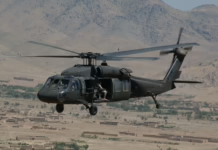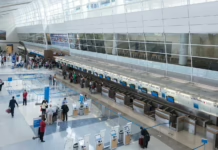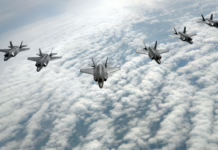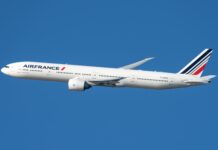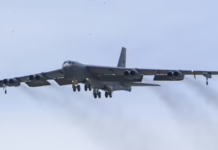US-led Talisman Sabre and REFORPAC operations showcase interoperability and combat readiness across 12,000 personnel and 400+ aircraft
Allied air forces are conducting extensive Asia-Pacific military exercises throughout July, focusing on long-range deployment capabilities and multinational interoperability as tensions continue in the region.
The operations center on two major exercises: Talisman Sabre 2025, a biennial Australia-US military training event, and the concurrent Resolute Force Pacific (REFORPAC) exercise, which involves rapid mass deployment of aircraft, personnel and equipment across the Asia-Pacific theater.
REFORPAC represents the larger of the two operations, involving more than 400 US and coalition aircraft with 12,000 service members operating at over 50 locations spanning 3,000 miles. The exercise tests critical combat capabilities including flightline operations, munitions loading, hot-pit refueling, combat search and rescue, distributed logistics, and air-to-air refueling.
“The exercise conditions during REFORPAC will require airmen to move fast, fight under attack, and sustain combat operations in ways we haven’t done in decades,” said Pacific Air Forces commander Gen. Kevin Schneider. “Our ability to fight and prevail in any contested environment depends on our team’s ability to generate aircraft sorties while under attack and often far away from our main operating bases.”
The exercises showcase several groundbreaking military capabilities, including the first-ever deployment of a US Air Force Boeing KC-135V/W Rivet Joint signals intelligence aircraft to Talisman Sabre. The 55th Wing asset deployed from Offutt Air Force Base in Nebraska with 200 personnel and over 121,000 pounds of equipment aboard two C-17 strategic transport aircraft, requiring nine months of planning.
In a historic first, US Air Force pilots flew Royal Australian Air Force Lockheed Martin F-35A Lightning II fighters during Talisman Sabre, marking the initial “interfly” effort between the services.
“In the short term, interfly events like this allow us to exchange information and best practices,” said USAF Reserve Maj. Justin Lennon, one of the pilots involved in the activity. “In the long term, as a coalition, normalizing interfly gives commanders additional options for agility and versatility in a future conflict. In a prolonged conflict, airplanes are capable of flying more hours a day than a pilot. Having the added flexibility to put any pilot in any F-35 and generate combat airpower anywhere in the world adds to the F-35 coalition’s lethality.”
The exercises also tested austere operations capabilities, with Royal Australian Air Force F/A-18E/F Super Hornet fighters being refueled and rearmed at a forward arming refueling point using equipment delivered by a RAAF C-17 transport aircraft.
REFORPAC is testing the US Air Force’s Agile Combat Employment (ACE) strategy, designed to complicate targeting for adversaries by deploying combat airpower from diverse airfields away from traditional large bases. The strategy represents a shift from concentrated operations to distributed combat capabilities.
Early in Talisman Sabre, six C-17 transport aircraft conducted a night drop of 335 US Army paratroopers, vehicles and equipment after a 14.5-hour flight from Elmendorf-Richardson Air Force Base in Alaska. The operation included paratroopers from Germany and France alongside US soldiers.
“We own the night,” said US Army Col. Brian Weightman of the US Army’s 11th Airborne Division. “Our ability to fly halfway around the world, communicate in real time, and drop combat-ready troops and equipment into an area should serve as a reminder to any potential adversary.”
The United Kingdom is participating in Talisman Sabre with a carrier strike group centered on HMS Prince of Wales, carrying F-35B Lightning II fighters and helicopters. The Royal Air Force also deployed an Airbus Defence and Space A330 Multi-Role Tanker Transport to support operations.
REFORPAC included deployment of two Boeing F-15EX Eagle II fighters to Japan’s Kadena Air Base. The US Air Force plans to deploy 36 of the latest F-15 variants to Kadena in early 2026.
In a separate but related exercise, US Air Force F-35A fighters deployed to the Philippines for Cope Thunder 25-2, marking the first time a squadron of the conventional takeoff and landing F-35 variant has operated in the Philippines. The deployment saw F-35As training with Korean Aerospace Industries FA-50 aircraft operated by the Philippine Air Force while gaining experience operating from austere locations with minimal personnel.
Cope Thunder, running since 1976, focuses on improving interoperability through bilateral fighter training and related activities between participating nations.
The combined exercises demonstrate growing emphasis on distributed operations and coalition interoperability as military planners adapt to potential contested environments across the vast Asia-Pacific region.

Key Takeaways
- Massive Scale: REFORPAC involves over 400 aircraft and 12,000 personnel operating across 50+ locations spanning 3,000 miles, representing one of the largest Asia-Pacific military exercises.
- Historic Interoperability: US Air Force pilots flew Australian F-35A fighters for the first time, demonstrating enhanced coalition flexibility and combat capabilities.
- New Strategic Approach: Exercises tested Agile Combat Employment strategy, designed to distribute airpower across multiple bases to complicate enemy targeting.
- First-Time Deployments: Notable firsts included KC-135 Rivet Joint signals intelligence aircraft joining Talisman Sabre and F-35A squadron operations in the Philippines.




